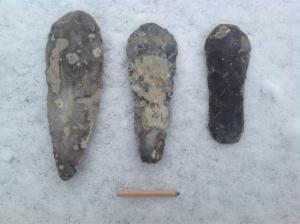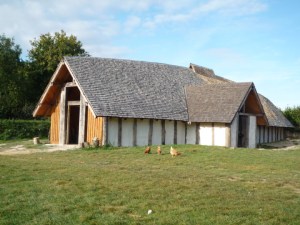The coup has become incredibly muddy after so much prolonged rain and it is hard to believe how you would have coped with these muddy conditions in the Stone Age. No grippy, steel toe capped boots in Neolithic times!
The focus of today was to continue with our use of flint tools to coppice the hazel in our coup. It was interesting to see how much time Neolithic people would have had to spend removing the enough material to make their houses. Our flint tools have been made by one of our volunteers James Dilley, who trades under the name Ancient Craft.
We have had some breakages of our flint axes and it is now a question of whether our technique is lacking or whether our Neolithic ancestors had the same problems, and, if they did, were they all capable of repairing these axes when they were damaged.









